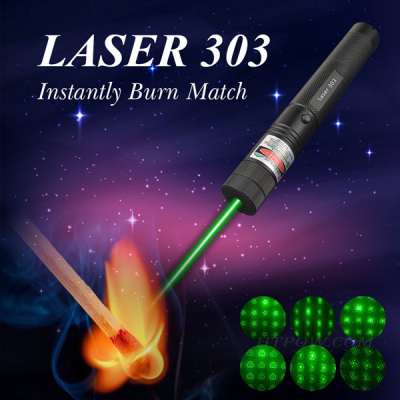Its core technology is to write phase-shift fiber gratings inside the active fiber core doped with rare earths. There is a certain distance between two segments of uniform-period fiber Bragg gratings to achieve a specific phase shift, such as 1/4 wavelength. Or 1/2 wavelength. Through the excitation of pump light, the output of single frequency laser pointer is obtained. The phase-shifted active fiber grating is used as the gain medium of the resonant cavity, and at the same time as the ultra-narrowband filter with single longitudinal mode output.
Single-frequency fiber laser: It has the advantages of long coherence and narrow linewidth. It plays an important role in many special fields. The shortcomings of this scheme are also obvious, including the high technical difficulty required for a quarter-wavelength phase-shifted fiber grating, the need to select a suitable rare-earth doped fiber, and the higher requirements for phase-shift grating packaging. The main manufacturers include Denmark NKT Photonics, France IxBlue, Chinese Academy of Sciences Semiconductor Institute, Shanghai Institute of Optics and Mechanics, Laser Institute of Shandong Academy of Sciences, Shanghai HannStar.
Distributed Bragg reflection type single-frequency fiber laser achieves higher gain through high doping concentration phosphate glass fiber, and short straight cavity design can achieve higher power output. However, it is difficult to achieve high-strength welding, the reliability of the resonant cavity is poor, and the requirements for the frequency-selective grating are high. In addition, the short straight cavity is difficult to manufacture and it is difficult to adapt to the harsh working environment.
The virtual ring cavity technology is also called “composite cavity technology”. It has the basic structure of a linear cavity. The cavity mirror of a straight cavity formed by fiber gratings is essentially a short straight cavity structure. The FSR determined by the cavity length is still a single longitudinal mode. The key is to require a shorter cavity length. The virtual ring cavity technology combines the ideas of a short straight cavity and a ring cavity, and realizes traveling wave operation in a standing wave cavity. From a technical point of view, it is a relatively excellent technology at present, but the technical process is difficult to achieve, and it lacks Reproducible and expensive. The representative company is the United States.
The characteristic of the optimized traveling wave cavity technology is that while eliminating the effect of standing wave space hole burning, the long gain fiber can fully absorb the pump light through the design of long cavity length to achieve high power output. At the same time, the traveling wave operation can greatly reduce the relative intensity noise and phase noise of the fiber green laser pointer, and achieve an ultra-narrow linewidth of <1kHz, and the single longitudinal mode output is selected through the all-fiber narrowband filter injection, and the long saturated absorber is stable and single Vertical mode operation. In addition, the single polarization control eliminates the polarization hole burning effect and realizes a stable single-polarization output with a polarization extinction ratio of up to 25dB or more. The typical representative is Shanghai HannStar’s CoSF-R series products.
Comparison of key performance indicators of various single-frequency lasers. The previous article mentioned the four key performance indicators of single-frequency fiber lasers. So how do various single-frequency lasers perform on the four key indicators? There are many factors that affect the phase noise of a single-frequency laser. From a popular point of view, the length and shape of the gain medium in the single-frequency laser, the fineness of the optical waveguide, and the length of the resonator can objectively reflect the phase noise of the single-frequency fiber laser pointer. .
